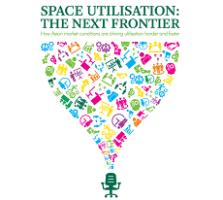November 24, 2015
Fast workplace migration to Windows 10 as demand for digital devices soars 0
 By 2019, organisations will deliver twice as many applications remotely compared with 2015, according to analysts Gartner which predicts that 50 percent of enterprises will have started Windows 10 deployments by January 2017. Several factors are driving this, specifically awareness of the end of support for Windows 7 in January 2020, strong compatibility with Windows 7 applications and digital devices, and a pent-up demand for tablet and 2-in-1 device rollouts. Gartner also predicts that by 2018, touchscreens will be shipped on one-third of all notebooks. As the incremental price for touch decreases, it will become more normalized as a default feature for notebooks. Pricing is expected to get much more competitive in the second half of 2016 as manufacturing processes continue to improve and Windows 10 migration planning starts to accelerate. In addition, by 2018, 30 percent of enterprises will spend more on display screens than on PCs.
By 2019, organisations will deliver twice as many applications remotely compared with 2015, according to analysts Gartner which predicts that 50 percent of enterprises will have started Windows 10 deployments by January 2017. Several factors are driving this, specifically awareness of the end of support for Windows 7 in January 2020, strong compatibility with Windows 7 applications and digital devices, and a pent-up demand for tablet and 2-in-1 device rollouts. Gartner also predicts that by 2018, touchscreens will be shipped on one-third of all notebooks. As the incremental price for touch decreases, it will become more normalized as a default feature for notebooks. Pricing is expected to get much more competitive in the second half of 2016 as manufacturing processes continue to improve and Windows 10 migration planning starts to accelerate. In addition, by 2018, 30 percent of enterprises will spend more on display screens than on PCs.
































November 23, 2015
The benefits of peeling back the layers of the workplace onion 0
by Darren Bilsborough • Comment, Flexible working, Technology, Workplace, Workplace design
(more…)